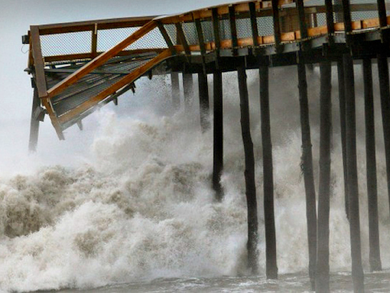Haley Dallas
A powerful and destructive storm approached the East Coast and struck fear in those in its path. The wrath of Hurricane Irene. From August 20th to the 22nd, she was simply a tropical storm, but within a matter of six days Irene went from a category 1 hurricane to a category 2, then peaked at a category 3 hurricane, just to slowly descend back down to a category 1. The wind picked up to 120 mph at its fastest on the 24th when the Hurricane hit the Bahamas.
"Irene will be a large storm, impacting areas far from the storm center track," a hurricane expert at forecasters Weather Underground, Jeff Masters, wrote in his blog, and he was right.
Irene destroyed homes, roads, bridges, and anything else that stood in her path with her powerful winds and waves. On the 29th, Obama administration officials traveled to Virginia, North Carolina, and Vermont - some of the hardest hit states - to survey response units according to Homeland Security. At least 27 deaths spread across 9 different states were blamed on the hurricane.
"It's just devastating," Gov. Peter Shumlin of Vermont said. "Whole communities under water, businesses, homes, obviously roads and bridges, rail transportation infrastructure. We've lost farmers' crops. We're tough folks up here but Irene ... really hit us hard."
In New York, torrential rains washed out roads and buildings as if they were made of paper. The town of Prattsville was hit particularly hard. Moderate to major flooding occurred from New York to the Connecticut Valley, through much of northern New Hampshire and many of the river crests set records.
The storm that first hit the U.S. mainland in North Carolina Saturday morning as a Category 1 hurricane was no longer even a tropical storm as of 11 p.m. Sunday, the National Hurricane Center said. Rescue squads were sent out across Vermont on Sunday morning because some of the neighborhoods were completely covered in water.
The devastation to homes, businesses and property on the East Coast is extensive and will be expensive.
